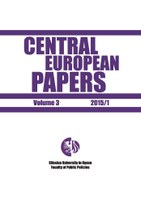The Idea of Central Europe and the Antall Government
The Idea of Central Europe and the Antall Government
Author(s): Géza JeszenszkySubject(s): Politics / Political Sciences
Published by: Slezská univerzita v Opavě, Fakulta veřejných politik
Keywords: Central Europe; Hungary; Antall József; Hungarian Democratic Forum (MDF) ; national minorities; Visegrád Cooperation
Summary/Abstract: The anti-communist intellectuals of Hungary knew only too well how much the Soviet-imposed system was inferior to the Western “free world.” Inspired by M. Kundera’s famous essay on “The Tragedy of Central Europe,” but also by 19th and 20th century Hungarian authors, they used the opportunity in 1989 to switch to a multi-party democracy following the West-European model. They expressed their dedication to Central European common interests and solidarity in the 1989 Christmas Manifesto of the Hungarian Democratic Forum, the party which, led by József Antall, won the free elections in Spring, 1990. The program presented to the Hungarian Parliament was an unambiguous endorsement of western values and a determination to work most closely with the rest of Central Europe, while also supporting the rights of the close to three million Hungarians who were transferred in the 1920 Peace Treaty to the countries neighbouring Hungary. The most meaningful realization of the Central European idea was the close political association of Poland, Czechoslovakia and Hungary created in February 1991 and named after its birthplace, Visegrád. The Common themes of the larger Central European area were enunciated by Prime Minister Antall at the Hexagonale summit held in July 1991 in Dubrovnik.
Journal: Central European Papers
- Issue Year: 3/2015
- Issue No: 1
- Page Range: 108-116
- Page Count: 9
- Language: English

